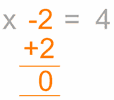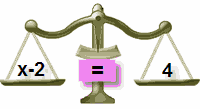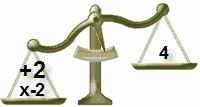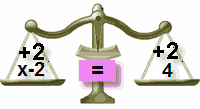On a mango tree in a jungle, there lived many birds. They were happy in their small nests. Before the onset of the rainy season, all the animal of the jungle repaired their homes. The birds also made their homes more secure.
Many birds brought twigs and leaves and others wove their nests. “We should also store some food for our children," chirped one of the birds. And they collected food, until they had enough to see them through the rainy season. They kept themselves busy preparing for the tough times.
Soon the rains came. It was followed by thunder and lighting. All the animals and birds stayed in their homes.
It continued raining for many days. One day, a monkey wet in the rain came into the forest. He sat on a branch, shivering with cold, water dripping from its body.
The poor monkey tried his best to get shelter, but in vain. The leaves were not enough to save him from the rains. “Brrr! It is so cold!" said the monkey.
The birds were watching all this. They felt sorry for the monkey but there was little they could do for him. One of them said, “Brother! Our small nests are not enough to give you shelter."
Another bird said, “All of us prepared for the rainy season. If you had, you would not be in this piteous situation."
“How dare you tell me what to do?" said the monkey, growling at the bird. The monkey angrily pounced on the bird’s nest, tore it and threw it on the ground. The bird and her chicks were helpless.
The poor bird thought, “Fools never value good advice. It is better not to advise them."
Thursday, 31 May 2018
A Hole in the Fence
In a small village, a little boy lived with his father and mother. He
was the only son.The parents of the little boy were very depressed due
to his bad temper. The boy used to get angry very soon and taunt others
with his words. His bad temper made him use words that hurt others. He
scolded kids, neighbours and even his friends due to anger. His friends
and neighbours avoided him, and his parents were really worried about
him.
His mother and father advised him many times to control his anger and develop kindness. Unfortunately, all their attempts failed. Finally, the boy’s father came up with an idea.
One day, his father gave him a huge bag of nails. He asked his son to hammer one nail to the fence every time he became angry and lost his temper. The little boy found it amusing and accepted the task.
Every time he lost his temper, he ran to the fence and hammered a nail. His anger drove him to hammer nails on the fence 30 times on the first day! After the next few days, the number of nails hammered on the fence was reduced to half. The little boy found it very difficult to hammer the nails and decided to control his temper.
Gradually, the number of nails hammered to the fence was reduced and the day arrived when no nail was hammered! The boy did not lose his temper at all that day. For the next several days, he did not lose his temper, and so did not hammer any nail.
Now, his father told him to remove the nails each time the boy controlled his anger. Several days passed and the boy was able to pull out most of the nails from the fence. However, there remained a few nails that he could not pull out.
The boy told his father about it. The father appreciated him and asked him pointing to a hole, “What do you see there?”
The boy replied, “a hole in the fence!”
He told the boy, “The nails were your bad temper and they were hammered on people. You can remove the nails but the holes in the fence will remain. The fence will never look the same. It has scars all over. Some nails cannot even be pulled out. You can stab a man with a knife, and say sorry later, but the wound will remain there forever. Your bad temper and angry words were like that! Words are more painful than physical abuse! Use words for good purposes. Use them to grow relationships. Use them to show the love and kindness in your heart!”
Moral – Unkind words cause lasting damage: Let our words be kind and sweet.
His mother and father advised him many times to control his anger and develop kindness. Unfortunately, all their attempts failed. Finally, the boy’s father came up with an idea.
One day, his father gave him a huge bag of nails. He asked his son to hammer one nail to the fence every time he became angry and lost his temper. The little boy found it amusing and accepted the task.
Every time he lost his temper, he ran to the fence and hammered a nail. His anger drove him to hammer nails on the fence 30 times on the first day! After the next few days, the number of nails hammered on the fence was reduced to half. The little boy found it very difficult to hammer the nails and decided to control his temper.
Gradually, the number of nails hammered to the fence was reduced and the day arrived when no nail was hammered! The boy did not lose his temper at all that day. For the next several days, he did not lose his temper, and so did not hammer any nail.
Now, his father told him to remove the nails each time the boy controlled his anger. Several days passed and the boy was able to pull out most of the nails from the fence. However, there remained a few nails that he could not pull out.
The boy told his father about it. The father appreciated him and asked him pointing to a hole, “What do you see there?”
The boy replied, “a hole in the fence!”
He told the boy, “The nails were your bad temper and they were hammered on people. You can remove the nails but the holes in the fence will remain. The fence will never look the same. It has scars all over. Some nails cannot even be pulled out. You can stab a man with a knife, and say sorry later, but the wound will remain there forever. Your bad temper and angry words were like that! Words are more painful than physical abuse! Use words for good purposes. Use them to grow relationships. Use them to show the love and kindness in your heart!”
Moral – Unkind words cause lasting damage: Let our words be kind and sweet.
Thursday, 24 May 2018
Algebra Activity
Solve this one:
What we want is an answer like "x = ...",
but the +5 is in the way of that!
We can cancel out the +5 with a −5 (because 5−5=0)
| x | + | 5 | = | 12 |
What we want is an answer like "x = ...",
but the +5 is in the way of that!
We can cancel out the +5 with a −5 (because 5−5=0)
So, let us have a go at subtracting 5 from both sides:x + 5 −5 = 12 −5
A little arithmetic (5−5 = 0 and 12−5 = 7) becomes:x + 0 = 7
Which is just:x = 7
Solved!
Introduction to Algebra
A Puzzle
What is the missing number?|
|
− | 2 | = | 4 |
Well, in Algebra we don't use blank boxes, we use a letter (usually an x or y, but any letter is fine). So we write:
| x | − | 2 | = | 4 |
And when we solve it we write:
| x | = | 6 |
Why Use a Letter?
| Because: | |
| it is easier to write "x" than drawing empty boxes (and easier to say "x" than "the empty box"). | |
| if there are several empty boxes (several "unknowns") we can use a different letter for each one. |
So x is simply better than having an empty box. We aren't trying to make words with it!
And it doesn't have to be x, it could be y or w ... or any letter or symbol we like.
And it doesn't have to be x, it could be y or w ... or any letter or symbol we like.
How to Solve
Algebra is just like a puzzle where we start with something like "x − 2 = 4" and we want to end up with something like "x = 6".But instead of saying "obviously x=6", use this neat step-by-step approach:
- Work out what to remove to get "x = ..."
- Remove it by doing the opposite (adding is the opposite of subtracting)
- Do that to both sides
We want
to remove
the "−2"
to remove
the "−2"
To remove it, do
the opposite, in
this case add 2
the opposite, in
this case add 2

Do it to
both sides

Which is ...
Solved!
Why did we add 2 to both sides?
To "keep the balance"...
 |
||
| In Balance |
| Add 2 to Left Side |
 |
| Out of Balance! |
| Add 2 to Right Side Also |
 |
| In Balance Again |
To keep the balance, what we do to one side of the "="
we should also do to the other side!
Thursday, 10 May 2018
Symmetry vs. Asymmetry
symmetry
• an object is symmetrical when one half
is a mirror image of the other half.
• it may be divided by one or more lines of symmetry.
EXAMPLES:is a mirror image of the other half.
• it may be divided by one or more lines of symmetry.
asymmetry, asymmetrical
• does not have sides exactly the same.
• one half is not not a mirror reflection of the other.
• one half is not not a mirror reflection of the other.
EXAMPLE:

Geometric properties
-
The rectangle has the following properties:
-
All the properties of a parallelogram apply (the ones that matter here are parallel sides, opposite sides are congruent, and diagonals bisect each other).
-
All angles are right angles by definition.
-
The diagonals are congruent.

-
-
The square has the following properties:
-
All the properties of a rhombus apply (the ones that matter here are parallel sides, diagonals are perpendicular bisectors of each other, and diagonals bisect the angles).
-
All the properties of a rectangle apply (the only one that matters here is diagonals are congruent).
-
All sides are congruent by definition.
-
All angles are right angles by definition.
-
Monday, 7 May 2018
The Solar System
The Solar System is made up of the Sun and all of the smaller objects that move around it. Apart from the Sun, the largest members of the Solar System are the eight major planets. Nearest the Sun are four fairly small, rocky planets - Mercury, Venus, Earth and Mars.


The Solar System and its planets
The Solar System is made up of the Sun and all of the smaller objects that
move around it. Apart from the Sun, the largest members of the Solar System
are the eight major planets. Nearest the Sun are four fairly small, rocky
planets - Mercury, Venus, Earth and Mars.
Beyond Mars is the asteroid belt – a region populated by millions of rocky
objects. These are left-overs from the formation of the planets, 4.5 billion
years ago.
On the far side of the asteroid belt are the four gas giants - Jupiter,
Saturn, Uranus and Neptune. These planets are much bigger than Earth, but very
lightweight for their size. They are mostly made of hydrogen and helium.
Until recently, the furthest known planet was an icy world called Pluto. However, Pluto is dwarfed by Earth’s Moon and many astronomers think it is too small to be called a true planet.
An object named Eris, which is at least as big as Pluto, was discovered very far from the Sun in 2005. More than 1,000 icy worlds such as Eris have been discovered beyond Pluto in recent years. These are called Kuiper Belt Objects. In 2006, the International Astronomical Union decided that Pluto and Eris must be classed as “dwarf planets”.
Even further out are the comets of the Oort Cloud. These are so far away that they are invisible in even the largest telescopes. Every so often one of these comets is disturbed and heads towards the Sun. It then becomes visible in the night sky.

Until recently, the furthest known planet was an icy world called Pluto. However, Pluto is dwarfed by Earth’s Moon and many astronomers think it is too small to be called a true planet.
An object named Eris, which is at least as big as Pluto, was discovered very far from the Sun in 2005. More than 1,000 icy worlds such as Eris have been discovered beyond Pluto in recent years. These are called Kuiper Belt Objects. In 2006, the International Astronomical Union decided that Pluto and Eris must be classed as “dwarf planets”.
Even further out are the comets of the Oort Cloud. These are so far away that they are invisible in even the largest telescopes. Every so often one of these comets is disturbed and heads towards the Sun. It then becomes visible in the night sky.

Contractions
What Is a Contraction?
Imagine blowing up a balloon and watching it expand. It gets bigger and bigger... Now if we let the air out, it shrinks, or contracts. To contract means to get smaller.In writing, you can use a contraction to combine two words together and make a shorter word. In other words, the contraction shrinks the two words. So a contraction is just a word that is a shortened form of two words put together.
For example, when the words can and not are put together, the contraction word can't is formed. The apostrophe (') is the small punctuation mark that takes the place of the letters we've removed. In the case of can't, the apostrophe replaces the n and the o of not.
How do Contractions Work?
To make a contraction word, we put two words together and shorten them using an apostrophe where the letters have been omitted, or taken out.-Can + not = can't
Remember, when we added the apostrophe it took the place the letters n and o of the word not.
Contractions With the Word Not
-Do + not = don'tWhen do and not are put together, they make the contraction don't. We took the two words, took out a letter (the o), put in the apostrophe, and then made the shorter word. The contraction word 'don't' was formed.
-Have + not = haven't
In this example, the words have and not were combined. The apostrophe took the place of the letter o and the word 'haven't' was formed.
-Aren't
Let's think about which two words were put together to form this contraction word: are + not.
-Wouldn't
What about this contraction word? Which two words were shortened? Would + not.
These are other common not contractions: aren't, couldn't, didn't, doesn't, hasn't, isn't, shouldn't, wasn't, and weren't.
Contraction Words With the Word Will
The English language always has special rules for some words; these words are known as irregular words. When the words 'will'+ 'not' are contracted, they do not form the word 'willn't'. That sounds odd, doesn't it? That's because will + not = won't. We use the word 'won't' often in speaking and writing.-I + will = I'll
The apostrophe took the place of the w and i in this contraction.
-She + will = she'll
Again, the apostrophe took the place of the w and i.
Try this: we + will = we'll and they + will = they'll
Here are some other common 'will' contractions: you'll, he'll, it'll, that'll , and who'll.
Air Pollution
What is air pollution?
Air pollution (say: po-loo-shun) occurs when gases, dust particles, fumes (or smoke) or odour are introduced into the atmosphere in a way that makes it harmful to humans, animals and plant. This is because the air becomes dirty (contaminated or unclean).
The Earth is surrounded by a blanket of air (made up of various gases) called the atmosphere. The atmosphere helps protect the Earth and allow life to exist. Without it, we would be burned by the intense heat of the sun during the day or frozen by the very low temperatures at night.
This is simply outdoor air pollution, usually caused by emissions from transportation, power generations, agriculture and open burning. The chemicals in Ambient Air Pollution is different from that of indoor air pollution.
When pollution occurs in the air, it can easily travel and spread, and because we breathe in air, we cannot easily avoid it.
Air pollution (say: po-loo-shun) occurs when gases, dust particles, fumes (or smoke) or odour are introduced into the atmosphere in a way that makes it harmful to humans, animals and plant. This is because the air becomes dirty (contaminated or unclean).
The Earth is surrounded by a blanket of air (made up of various gases) called the atmosphere. The atmosphere helps protect the Earth and allow life to exist. Without it, we would be burned by the intense heat of the sun during the day or frozen by the very low temperatures at night.
Any additional gas, particles or odours that
are introduced into the air (either by nature or human activity) to
distort this natural balance and cause harm to living things can be
called air pollution.

Things that pollute the air are called pollutants. Examples of pollutants include nitrogen oxides, carbon monoxides, hydrocarbons, sulphur oxides (usually from factories), sand or dust particles, and organic compounds that can evaporate and enter the atmosphere.
There are two types of pollutants:
Primary pollutants are those gases or particles that are pumped into the air to make it unclean. They include carbon monoxide from automobile (cars) exhausts and sulfur dioxide from the combustion of coal.
Secondary pollutants: When pollutants in the air mix up in a chemical reaction, they form an even more dangerous chemical. Photochemical smog is an example of this, and is a secondary pollutant.
Why is air pollution such an important issue today?
Click this button to see:

New Word: Ambient Air Pollution

Things that pollute the air are called pollutants. Examples of pollutants include nitrogen oxides, carbon monoxides, hydrocarbons, sulphur oxides (usually from factories), sand or dust particles, and organic compounds that can evaporate and enter the atmosphere.
There are two types of pollutants:
Primary pollutants are those gases or particles that are pumped into the air to make it unclean. They include carbon monoxide from automobile (cars) exhausts and sulfur dioxide from the combustion of coal.
Secondary pollutants: When pollutants in the air mix up in a chemical reaction, they form an even more dangerous chemical. Photochemical smog is an example of this, and is a secondary pollutant.
Why is air pollution such an important issue today?
Click this button to see:
New Word: Ambient Air Pollution
This is simply outdoor air pollution, usually caused by emissions from transportation, power generations, agriculture and open burning. The chemicals in Ambient Air Pollution is different from that of indoor air pollution.
When pollution occurs in the air, it can easily travel and spread, and because we breathe in air, we cannot easily avoid it.
Thursday, 3 May 2018
Trophic Levels
The trophic level of an organism is the position it holds in a food chain.
- Primary producers (organisms that make their own food from sunlight and/or chemical energy from deep sea vents) are the base of every food chain - these organisms are called autotrophs.
- Primary consumers are animals that eat primary producers; they are also called herbivores (plant-eaters).
- Secondary consumers eat primary consumers. They are carnivores (meat-eaters) and omnivores (animals that eat both animals and plants).
- Tertiary consumers eat secondary consumers.
- Quaternary consumers eat tertiary consumers.
- Food chains "end" with top predators, animals that have little or no natural enemies.
The Food Chain
Every living thing needs energy in order to live. Everytime animals do something (run, jump) they use energy to do so.
Animals get energy from the food they eat, and all living things get energy from food. Plants use sunlight, water and nutrients to get energy (in a process called photosynthesis). Energy is necessary for living beings to grow.
A food chain shows how each living thing gets food, and how nutrients and energy are passed from creature to creature. Food chains begin with plant-life, and end with animal-life. Some animals eat plants, some animals eat other animals.
 A simple food chain could start with grass, which is eaten by rabbits. Then the rabbits are eaten by foxes.
A simple food chain could start with grass, which is eaten by rabbits. Then the rabbits are eaten by foxes.
Here's another food chain, with a few more animals. It starts with acorns, which are eaten by mice. The mice are eaten by snakes, and then finally the snakes are eaten by hawks. At each link in the chain, energy is being transferred from one animal to another.

There can be even more links to any food chain. Here another animal is added. It goes
Grass to grasshopper to mouse to snake to hawk.
Animals get energy from the food they eat, and all living things get energy from food. Plants use sunlight, water and nutrients to get energy (in a process called photosynthesis). Energy is necessary for living beings to grow.
A food chain shows how each living thing gets food, and how nutrients and energy are passed from creature to creature. Food chains begin with plant-life, and end with animal-life. Some animals eat plants, some animals eat other animals.
Here's another food chain, with a few more animals. It starts with acorns, which are eaten by mice. The mice are eaten by snakes, and then finally the snakes are eaten by hawks. At each link in the chain, energy is being transferred from one animal to another.
There can be even more links to any food chain. Here another animal is added. It goes
Grass to grasshopper to mouse to snake to hawk.
Subscribe to:
Comments (Atom)